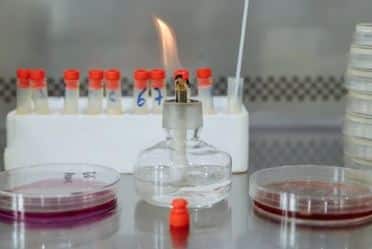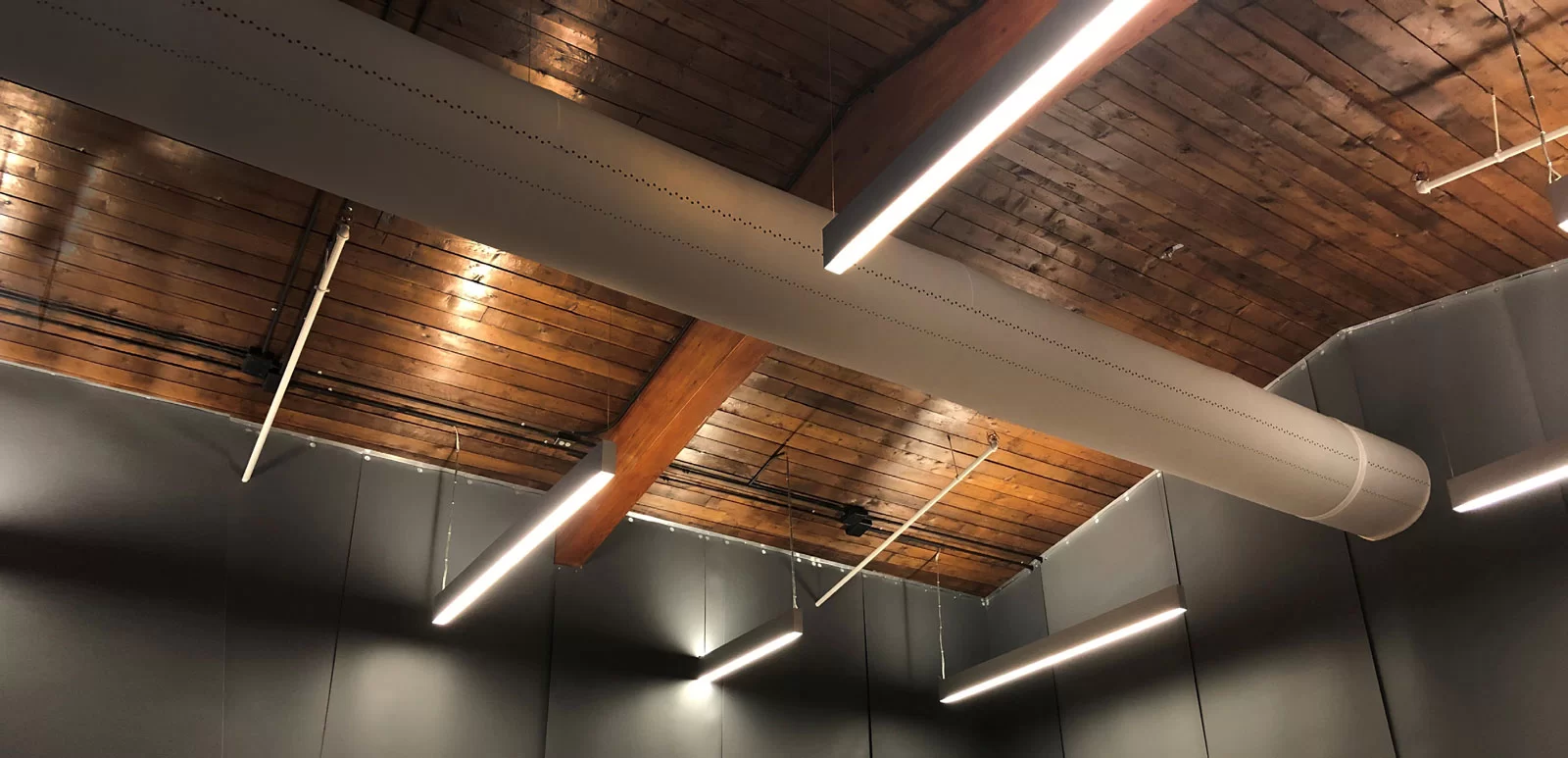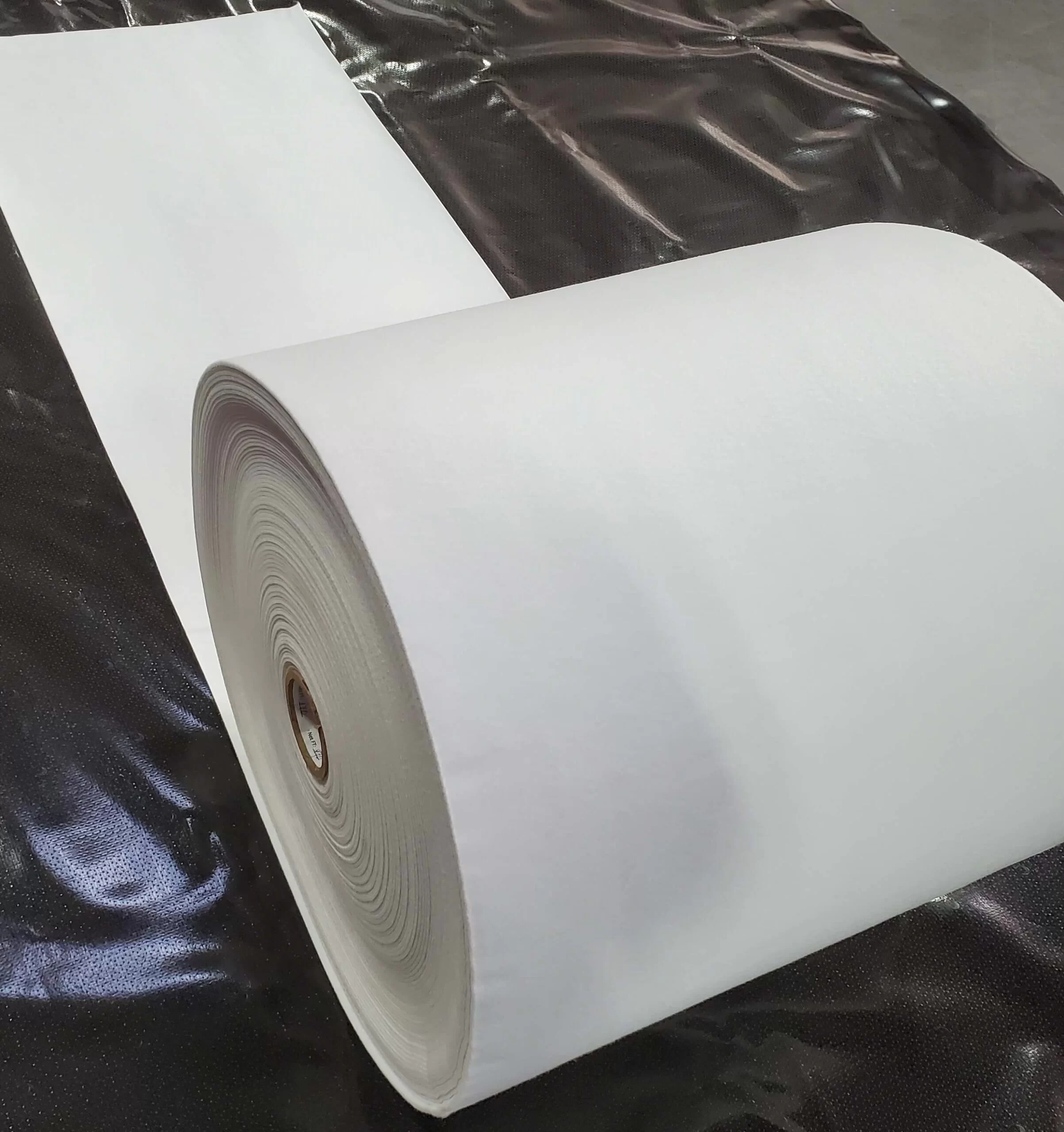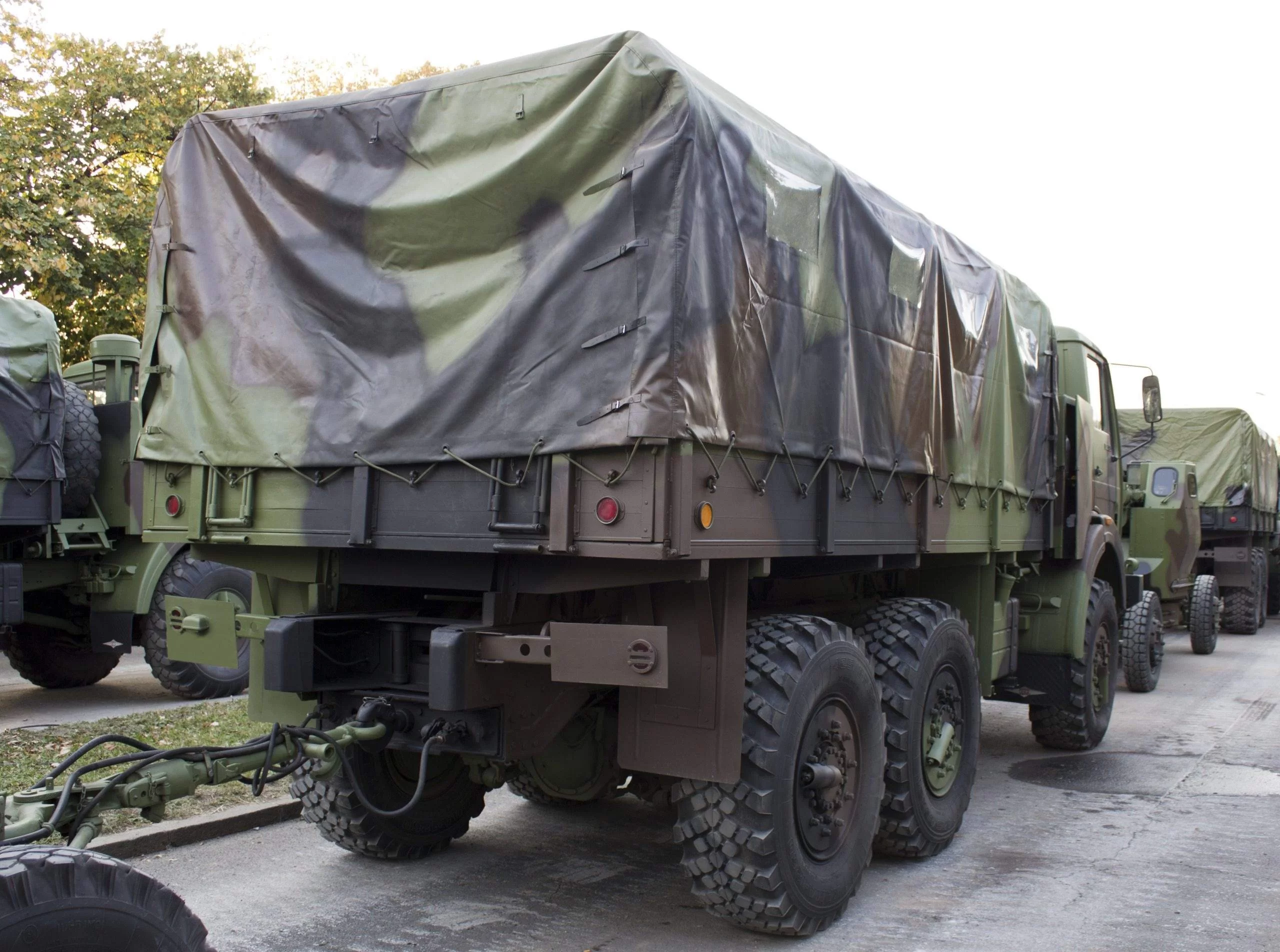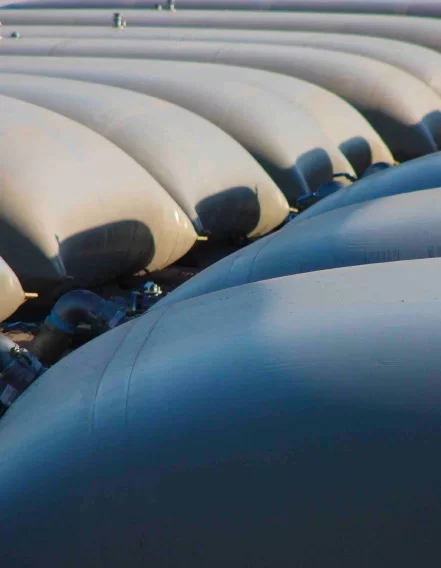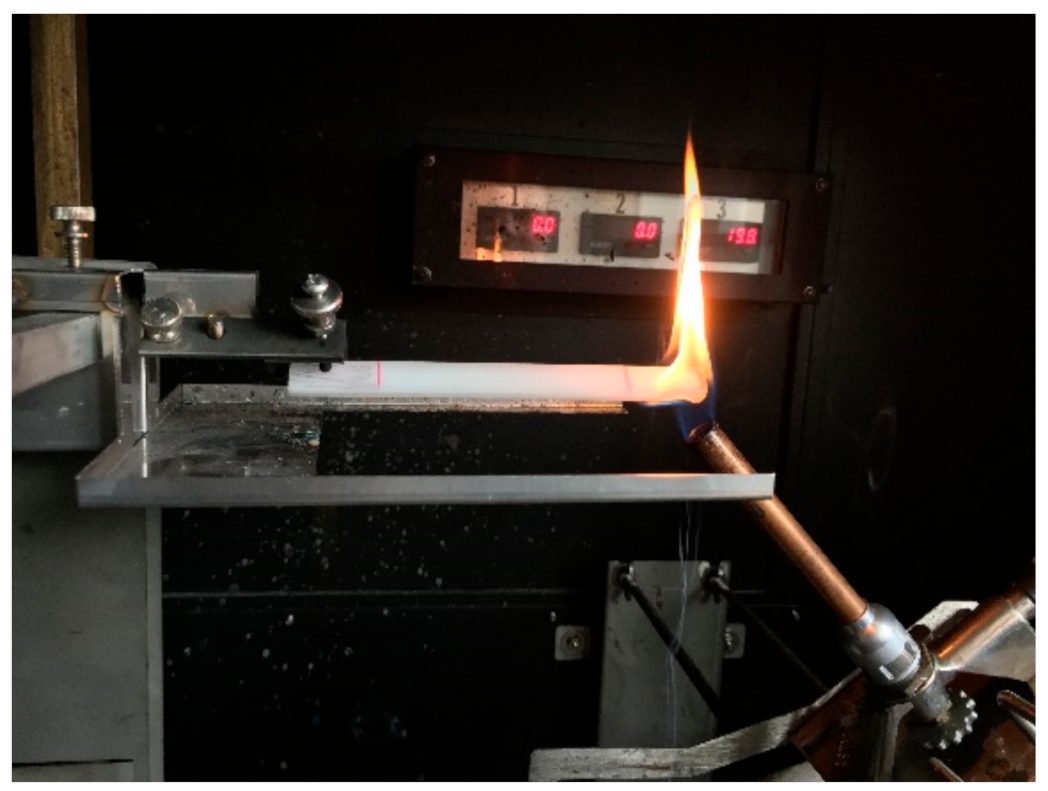Performance Tests to Ensure Suitability for Your Application 1.3 FLAME RETARDANCY
Engineered Polymeric materials are replacing metals in many applications due to their favorable mechanical and chemical properties along with flexibility making it easier to work with, but flammability and combustibility are the two limiting factors for polymers which can be overcome either by altering the formulation by adding suitable flame retardants or by the use of fire retardant surface coatings.
For combustion to take place on any material we would need three components, oxygen, fire/ ignition source and fuel and if we take away any one component, we can prevent a fire. Plastics and most polymers are generally carbon-based materials which are an excellent source for fuel, therefore with the addition of various types of flame retardants to the polymer system we can take away the fuel source preventing a catastrophe.
Flame tests show how fast a flame will spread across a textile. A number of generally accepted standardized test methods are presented in detail by NFPA, ISO, IEC, ASTM, UL, BS, and DIN standards. Static vertical tests are more extreme than horizontal testing, and testing done in a wind tunnel is much more extreme than static tests. We will look at some of the test methods commonly used in the industry
- NFPA 701– Standard Methods of Fire Tests for Flame Propagation of Textiles and Films
- ASTM D2863– Standard Test Method for Measuring the Minimum Oxygen Concentration to Support Candle-Like Combustion of Plastics (Oxygen Index)
- UL 94– Underwriters Laboratories test standard UL 94
- ASTM E 84 – Standard Test Method for Surface Burning Characteristics of Building
Materials
- ASTM D 6413 – Standard test method for Flame Resistance of Textiles (Vertical)
The National Fire Protection Association (NFPA) has various standards depending on how the fabric will be used, NFPA 701: Standard Methods of Fire Tests for Flame Propagation of Textiles and Films applies to draperies, curtains, and similar hanging textiles.
NFPA 701 test method 1 is a small-scale vertical test for material with a weight density less than or equal to 21 oz/yd2. Some example materials are single-layer fabrics, curtains and drapery, military tents, safety vests, rain coats and table skirts. NFPA 701 (Small Scale) testing measures the ignition resistance of a fabric after it is exposed to a flame for 12 seconds. The flame, char length, and flaming residue are recorded.
NFPA 701 test method 2 is a large vertical scale test for materials with a weight density more than 21 oz/yd2 for fabrics such as blackout linings, awnings, and fabric banners or structures.
ASTM D2863- Standard Test Method for Measuring the Minimum Oxygen Concentration to Support Candle-Like Combustion of Plastics (Oxygen Index) test method, commonly referred as the limiting oxygen index or LOI describes a procedure for measuring the minimum concentration of oxygen, expressed as percent volume, that will just support flaming combustion in a flowing mixture of oxygen and nitrogen, the higher the LOI the lower the flammability. Also referred under BS ISO 4589-2; NES 714. The test allows for various plastics to be compared for fire hazard considerations across many industrial and commercial applications.
Underwriters Laboratories (UL) is an independent organization that provides product safety testing and certification and is generally accepted standard throughout most of the world. The UL 94 Standard provides a method for rating the ignition characteristics of plastic materials two ratings that are the most frequently used are HB and V (V-0, V-1, or V-2). Materials that burn slowly or self-extinguish and do not drip will rank highest in the UL classification scheme. UL 94 flammability tests are not applicable to materials whose thickness exceeds 13.0 mm, or whose surface area exceeds 1m2.[1] It is a preliminary indication of a plastics acceptability for use as part of a device or appliance with respect to its flammability. It is not intended to reflect the hazards of a material under actual fire conditions.
ASTM E84 test is for measuring the surface burning behavior of building materials, it is one of the most stringent tests available. It is conducted by placing a 24” wide x 24’ long sample into a Steiner Tunnel for a period of 10 min. The progress of the flame is then monitored through viewports on one side of the apparatus and recorded, with software computing the various data points to derive the FSI and SDI. Smoke developed is also measured through the optical density of a light obscuration meter. The rating on the test is given as follows [2]
ASTM D 6413 is commonly used as a preliminary test with Pass/ Fail criteria used to measure and observe the response of materials to heat and flame. This is the defining test method for compliance with OSHA 1910.269 and adopted from Federal Test Standard No. 191A Method 5903.1, the vertical flame test, one of the most commonly used tests on flame resistant fabrics in the United States Defense and Military.
ASTM D 6413 is commonly used as a preliminary test with Pass/ Fail criteria used to measure and observe the response of materials to heat and flame. This is the defining test method for compliance with OSHA 1910.269 and adopted from Federal Test Standard No. 191A Method 5903.1, the vertical flame test, one of the most commonly used tests on flame resistant fabrics in the United States Defense and Military.
Flame retardants can be added to plastics to inhibit or suppress the ignition or burning process. The disadvantage of the use of flame retardants is that many of the more common additives can also increase the amount of smoke generated during burning. Some of the common mechanisms of Flame Retardants are, by cooling through an endothermic reaction (ATH), Free radical method, where free radical scavengers interfere with combustion process (Halogen based FR, antimony oxide), Formation of protective layer by creating char (Phosphorous FR) to name a few. The most commercially available flame retardants fall under two classes:
- Organic halogenated compounds, bromine-based types, are the most commonly used flame retardants in plastics
- Non-halogen flame retardants: the phosphorous types or “char formers” and the metal oxides or “endothermic” types
At E Squared we work with various Flame Retardants available in the industry to meet the requirements of all the different Flame test for various applications while also meeting any regulatory requirements. Please contact our Sales or Technical team to discuss your project.
Key Acronyms
- NFPA – National Fire Protection Association
- UL – Underwriters Laboratories
- ASTM – American Society for Testing and Materials
- ISO -International Organization for Standardization
- IEC-International Electrotechnical Commission
- BS-British Standards
- DIN -DeutschesInstitutfürNormung (European Standards)
- NES- Naval Engineering Standards (UK Ministry of Defense)
- ATH – Aluminum trihydroxide
- LOI- Limiting oxygen index
- FR – Flame Retardant
- OSHA- Occupational Safety and Health Administration
[1] Understanding UL 94 Certifications and Limitations
[2] ASTM E84-21a -Standard Test Method for Surface Burning Characteristics of Building Materials
[3] History of Flame Retardants [image], Flame retardant polymer materials: An update and the future for 3D printing developments, January 6, 2022 by Henri Vahbi
